| Core tools |
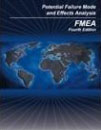 FMEA-4 |
Chrysler, Ford, and General Motors used as a guide to assist their suppliers in the development of both Design and Process FMEAs. The manual does not define requirements; it is intended to clarify questions concerning the technical development of FMEAs. |
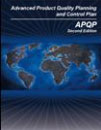 APQP-2 |
The APQP manual provides general guidelines for ensuring the Advanced Product Quality Planning is implemented in accordance with the requirements of the customer. It does not give specific instructions on how to arrive at each APQP or Control Plan entry. These guidelines are intended to cover most situations that can normally occur in the early planning or design phases, or during process analysis. Questions about these guidelines should directed to your authorized customer representative. |
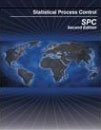 SPC-2 |
This manual is an introduction to statistical process control and is intended to cover normally occurring SPC system situations. It is not intended to limit evolution of SPC methods suited to particular processes or commodities. |
 MSA-4 |
The purpose of this document is to present guidelines for assessing the quality of a measurement system. This document is not intended to be a compendium of analyses for all measurement systems. Its primary focus is measurement systems where the readings can be replicated on each part. Customer approval is required for measurement systems analysis methods not covered in this manual. |
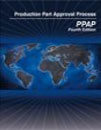 PPAP-4 |
Production Part Approval Process (PPAP) defines requirements for production part approval, including production and bulk materials. The purpose of PPAP is to determine if all customer engineering design record and specification requirements are properly understood by the supplier and that the process has the potential to produce product consistently meeting these requirements during an actual production run at the quoted production rate. |
| ISO/TS 16949. ISO/TS 16949 |
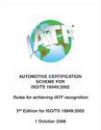 TS Rules-4 |
Automotive Certification Scheme for ISO/TS 16949, Rules for Achieving and Maintaining IATF Recognition, Fourth Edition.
This document, in regards to ISO/TS 16949 implementation, includes criteria for certification body recognition, certification body audit process, certification body auditor qualifications, and ISO/TS 16949 certificates. These requirements and any Annexes are binding for certification bodies recognized by the IATF for the ISO/TS 16949 certification scheme and, therefore, shall need to be understood |
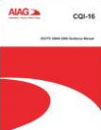 CQI-16 |
AIAG Guidance is limited to providing assistance in the application of ISO/TS 16949:2009. This document is for reference only and is not intended as a requirement for certification. This document provides examples, applications and explanations for clauses in ISO/TS |
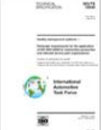 TS-3 |
This third edition of ISO/TS 16949:2009 cancels and replaces the second edition (ISO/TS 16949:2002), which has been technically amended according to ISO 9001:2008. |
| Special process |
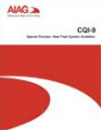 CQI-9 |
The goal of the publication is the development of a heat treat management system that provides for continual improvement, emphasizing defect prevention and the reduction of variation and waste in the supply chain. |
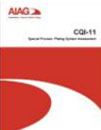 CQI-11 |
The goal of the publication is the development of a plating management system that provides for continual improvement, emphasizing defect |
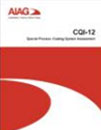 CQI-12 |
The goal of the publication is the development of a coating management system that provides for continual improvement, emphasizing defect prevention and the reduction of variation and waste in the supply chain. |
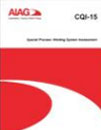 CQI-15 |
The goal of the publication is the development of a weld management system that provides for continual improvement, emphasizing defect prevention and the reduction of variation and waste in the supply chain. |
 CQI-17 |
The goal of the publication is the development of a soldering management system that provides for continual improvement, emphasizing defect prevention and the reduction of variation and waste in the supply chain. |
| Others |
 B-10 |
This guideline has been published to combine the B-10, Trading Partner Labels Implementation Guideline, the B-12 Quick Receive Guideline, and the B-14, Guideline for Use of Two Dimensional Symbols with AIAG Trading Partner Labels into one cohesive document. The wealth of data required on today's shipping labels, updates to the referenced documents, and the need to review them in building an effective shipping label required this integration. |
 CQI-10 |
The purpose of this document is to assist organization in improving industry- and company-wide behavioral changes that promote the use of effective problem solving, provide a recommended Effective Problem Solving (EPS) Process that can be used as a model problem solving process and use this process as a benchmark to compare existing problem solving processes and identify current gaps or deficiencies that should be addressed. |
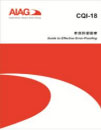 CQI-18 |
Building a 'zero error' culture is every organizations goal. Effective Error Proofing is a comprehensive guideline on how to build that culture into any organization by moving away from detection oriented quality practices and toward a culture of zero error. The result is higher quality, lower warranty and increased confidence in your processes and their output. You will also be able to better manage your inventory by reducing waste, allowing you to minimizing your safety buffer stock resulting in higher customer satisfaction and profits. |
 CQI-19 |
Improve product quality and lower cost with the Sub-Tier Supplier Management Process Guideline. Developed to address common issues in the industry, this guideline defines the minimum quality-related requirements for Sub-Tier suppliers and provides explicit guidance on effective identification and control of Pass Through Characteristics (PTC). It also defines the minimum content for use in an organization's supplier risk and quality system assessments, and lists qualifications for supplier development "coaches", resulting in higher quality and lower cost to all members of the supply chain. |
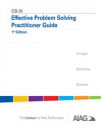 CQI-20 |
Preventing recurring problems and implementing corrective actions quickly and effectively is one of the main concerns in manufacturing today. CQI-20 provides the latest thinking in problems solving available and focuses on root cause analysis and the roles of the problem solving team members in resolving difficult to diagnose issues. CQI-20 also provides guidance for which quality tools are most effective at each stage of the process, ensuring you're using the right tool at the right time. This guide, when used with AIAG Effective Problem Solving Leader Guide CQI-21, provides valuable tools in helping your organization realize an increase in quality and profits. |








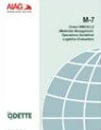













 For further inquiry
For further inquiry